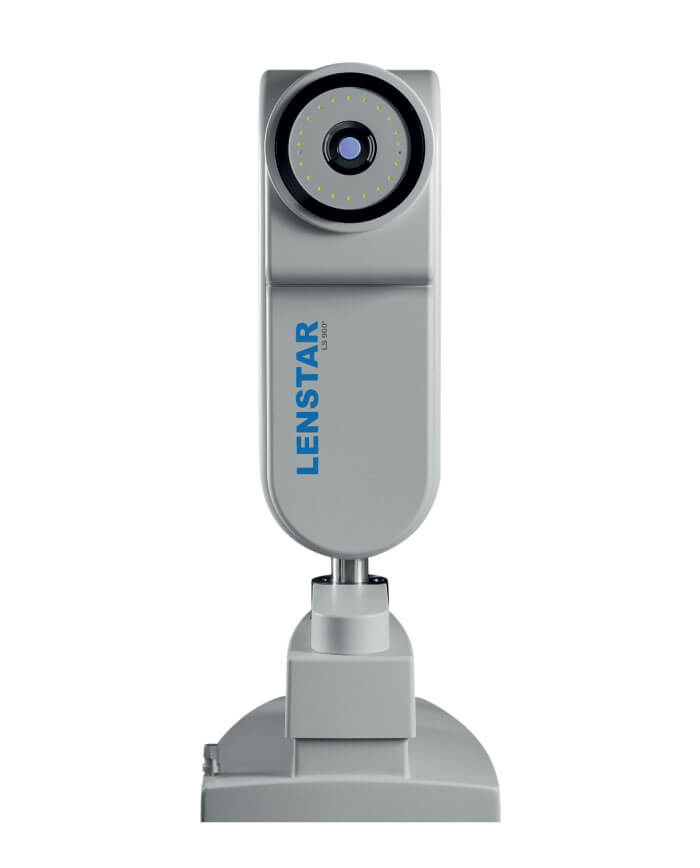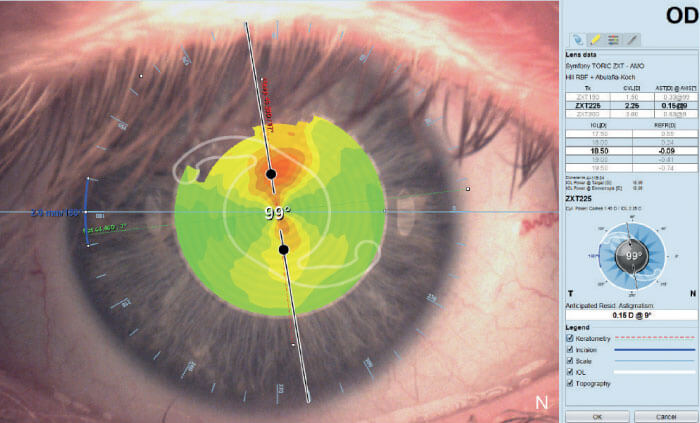
Standard keratometric and topography machines tend to yield varying degrees of inaccuracies when it comes to assessing corneal astigmatism. But in today’s competitive healthcare climate, any amount of inaccuracy is simply not good enough. Patients want perfection.
If surgeons are to achieve truly accurate IOL predictions – even in torical applications – a new approach is needed. Enter the HillRadial Basis Function (Hill-RBF) 2.0.
Unlike theoretical formulas, the Hill-RBF 2.0 selects IOL power using AI-driven pattern recognition rather than effective lens position. Based entirely on data, and so free of calculation bias, it works by analyzing and processing real-world data collected by leading cataract surgeons.
The powerful combination of artificial intelligence and data extrapolation results in highly accurate IOL predictions – 94.8 percent within ±0.5 D in all eyes, to be precise. To make sure that figure is as accurate as possible, the Hill-RBF also runs a reliability check. If it does not have sufficient data to make an accurate prediction of IOL power, it informs the surgeon.
The benefits are two-fold: greater confidence for surgeons and better postoperative outcomes for patients. So what makes the Hill-RBF 2.0 so accurate and effective? The first reason is simple: intelligent design. Hill-RBF 2.0 is the only approach that uses adaptive learning and an enormous dataset – three times larger than that of the previous version.
Currently encompassing more than 12,400 eyes, the number will continue to grow in the coming years as more surgeons add to the dataset. And as the likelihood of similar eyes increases, the accuracy of IOL predictions increases too.
The second reason behind the accuracy of Hill-RBF 2.0 is its use of the Abulafia-Koch algorithm, which is how it compensates for the posterior corneal astigmatism effect.

The formula, based on a regression model created by Doug Koch and Adi Abulafia, works on the premise that post-operative astigmatic outcomes can be optimized by calculating total corneal astigmatism with corrected magnitude and meridian, using anterior curvature-based corneal measurements.
And research confirms it. In a study into predicted refractive astigmatism, standard calculators reported errors between 0.55 and 0.75 diopters – while the Hill-RBF reported errors of just 0.07 (1). It’s just one study of many that demonstrate Hill-RBF 2.0’s ability to reduce error and increase the accuracy of IOL predictions, even in torical applications.
Doesn’t every ophthalmologist have the same goal: to provide the best possible care to their patients? With the Hill-RBF 2.0, available exclusively on the Lenstar 900 from Haag-Streit, the goal is made achievable.
By harnessing an AI-powered, data driven approach, surgeons can feel more confident that they are recommending the best IOL for their patients – and, as the dataset continues to grow, so too will confidence levels.
